 Life as a grad student, as many of you already know, is a constant battle with completing assignments on time, keeping up the grades for future funding opportunities and getting enough sleep. My first semester in the Master of Spatial Analysis program is nearing its end in what seems like the shortest semester of school I’ve ever taken. During this time I have had the pleasure to strengthen some of my skills in the R language for statistical computing for the purpose of water quality trend analysis (SA8904 — GIS Project Management). This post will show how I have used R for water quality trend analysis, using publicaly available data from the USGS (due to a NDA that prohibits me to share my school work).
Life as a grad student, as many of you already know, is a constant battle with completing assignments on time, keeping up the grades for future funding opportunities and getting enough sleep. My first semester in the Master of Spatial Analysis program is nearing its end in what seems like the shortest semester of school I’ve ever taken. During this time I have had the pleasure to strengthen some of my skills in the R language for statistical computing for the purpose of water quality trend analysis (SA8904 — GIS Project Management). This post will show how I have used R for water quality trend analysis, using publicaly available data from the USGS (due to a NDA that prohibits me to share my school work).
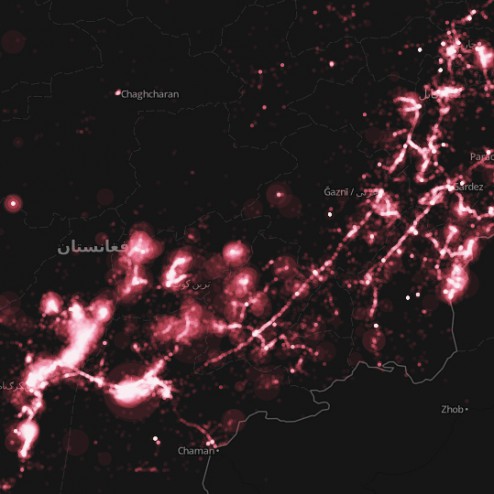 The Afghan War Diary, made available by the Wikileaks group, is the disclosure of internal US Military logs. Wikileaks has been known to release data that contains latitudinal and longitudinal information useful for spatial analysis. I’ve taken the liberty to map the some-76,000 military logs.
The Afghan War Diary, made available by the Wikileaks group, is the disclosure of internal US Military logs. Wikileaks has been known to release data that contains latitudinal and longitudinal information useful for spatial analysis. I’ve taken the liberty to map the some-76,000 military logs.
The military logs are a collection of top secret classified correspondences that detail various military encounters and situational reports. Some of the most popular headings in the log are: enemies killed/wounded in action, friendlies killed/wounded in action and reporting unit (squad/other).
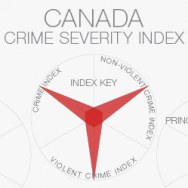
Working with the Crime Severity Index has been an interesting exercise. The data are available through Statistics Canada, which tracks police-reported crime severity as well as the volume of reported crimes. The Crime Severity Index offers a secondary measure that helps us to understand more about the crimes committed per Province. Generally speaking, severity of crime is not correlated with the volume of crime committed, but there are certainly some outliers. We inherit the inability to determine whether or not these correlations actually prove to be true when studying data aggregated to such a large (Provincial) extent. Continue reading »
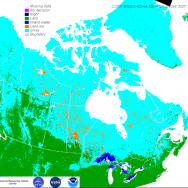 Sometimes we stumble upon interesting things and we don’t necessarily know how we should use what we have just found. A series of maps; snow cover in Canada was an interesting find but not really all that useful for any of my personal projects. However, I eventually came back to it when I realized that not all geovisualizations occur within a GIS environment. Continue reading »
Sometimes we stumble upon interesting things and we don’t necessarily know how we should use what we have just found. A series of maps; snow cover in Canada was an interesting find but not really all that useful for any of my personal projects. However, I eventually came back to it when I realized that not all geovisualizations occur within a GIS environment. Continue reading »
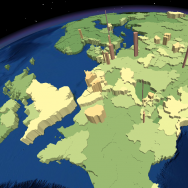 There exists many methods for geovisualization of spatial phenomena. As talked about a few weeks ago, population density can be mapped out using cartograms, or by other more classical methods, such as the chloropleth and dot density techniques. Another method is shown below, whereby population density is explored as a 3-dimensional polygon extrusion. This has been completed using ArcGlobe with ESRI basic world population-by-state data. Have a look at the video below! Continue reading »
There exists many methods for geovisualization of spatial phenomena. As talked about a few weeks ago, population density can be mapped out using cartograms, or by other more classical methods, such as the chloropleth and dot density techniques. Another method is shown below, whereby population density is explored as a 3-dimensional polygon extrusion. This has been completed using ArcGlobe with ESRI basic world population-by-state data. Have a look at the video below! Continue reading »
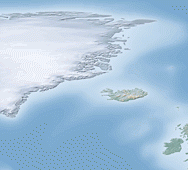 Open, free and public. Three terms, which when appearing before the word “GIS” make geographers feel all warm and fuzzy (I think?). Geospatial data can be very costly, but free alternatives may be suitable, if not as useful, as their expensive counterparts. Therefore, its worthwhile knowing what data is available for public consumption. I have compiled a list of the open GIS data resources that I frequently make use of in my personal projects. Hopefully they become as useful to you, as they are to me. Continue reading »
Open, free and public. Three terms, which when appearing before the word “GIS” make geographers feel all warm and fuzzy (I think?). Geospatial data can be very costly, but free alternatives may be suitable, if not as useful, as their expensive counterparts. Therefore, its worthwhile knowing what data is available for public consumption. I have compiled a list of the open GIS data resources that I frequently make use of in my personal projects. Hopefully they become as useful to you, as they are to me. Continue reading »
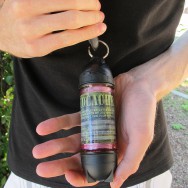 A week was spent in Montréal, wining, dining and exploring both old and new. While there, Heather and I had the opportunity to do some geocaching. Not only was this a new experience for Heather, it was also the first time I had been out geocaching in almost 10 years. Only now do I remember how frustrating it can be when you can’t find any of the geocaches you have set out to look for. Heather and I managed to locate 1 of 7 geocaches during our trip and we took pleasure out of finding it in the middle of a concrete jungle. Continue reading »
A week was spent in Montréal, wining, dining and exploring both old and new. While there, Heather and I had the opportunity to do some geocaching. Not only was this a new experience for Heather, it was also the first time I had been out geocaching in almost 10 years. Only now do I remember how frustrating it can be when you can’t find any of the geocaches you have set out to look for. Heather and I managed to locate 1 of 7 geocaches during our trip and we took pleasure out of finding it in the middle of a concrete jungle. Continue reading »
 After having seen the many iterations of the global connectivity map, I have decided to give it a try myself. The maps are being produced using this data, which offers public air-traffic data in tabular format. The data is available in three categories: airports, airlines and routes. The airports and routes data can be manipulated, combined and cleaned-up to create a complimentary table that lists the longitude and latitude of each flights origin and destination. This allows us to connect each flight origin and destination. However, straight lines of Continue reading »
After having seen the many iterations of the global connectivity map, I have decided to give it a try myself. The maps are being produced using this data, which offers public air-traffic data in tabular format. The data is available in three categories: airports, airlines and routes. The airports and routes data can be manipulated, combined and cleaned-up to create a complimentary table that lists the longitude and latitude of each flights origin and destination. This allows us to connect each flight origin and destination. However, straight lines of Continue reading »

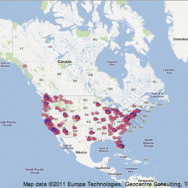 Not unlike other superstores around the world, Costco’s presence has had somewhat of a profound impact on our consumeristic lives. The ability to purchase goods at larger than normal quantities, sometimes well below average retail value, makes it an attractive shopping experience. The first Costco opened in San Diego, California, 1976. It’s growth shows wildfire-like spread throughout the United States west coast. It is only in the mid-to-late 90’s which show remarkable expansion of Costco locations to central and eastern United States..
Not unlike other superstores around the world, Costco’s presence has had somewhat of a profound impact on our consumeristic lives. The ability to purchase goods at larger than normal quantities, sometimes well below average retail value, makes it an attractive shopping experience. The first Costco opened in San Diego, California, 1976. It’s growth shows wildfire-like spread throughout the United States west coast. It is only in the mid-to-late 90’s which show remarkable expansion of Costco locations to central and eastern United States..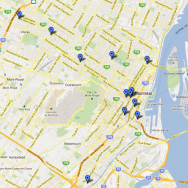 As our trip to Montréal nears, Heather (my girlfriend) and I have been studiously keeping track of the places that we would like to explore. One thing is for sure, we are going to be more than prepared because we are using google fusion tables. May it be a raved about restaurant or a grocery store that is closest to our hotel, we have every place of interest accessible online as a map or in tabular format.
As our trip to Montréal nears, Heather (my girlfriend) and I have been studiously keeping track of the places that we would like to explore. One thing is for sure, we are going to be more than prepared because we are using google fusion tables. May it be a raved about restaurant or a grocery store that is closest to our hotel, we have every place of interest accessible online as a map or in tabular format.